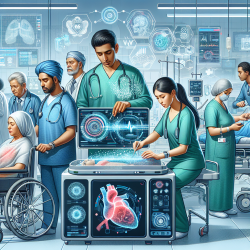Introduction
The intersection of artificial intelligence (AI) and healthcare continues to revolutionize the way we approach complex medical challenges. In the realm of trauma care, particularly hemorrhagic trauma, AI and machine learning (ML) are paving the way for enhanced diagnosis, treatment strategies, and patient outcomes. A recent review titled "Artificial intelligence and machine learning for hemorrhagic trauma care" highlights significant advancements and potential applications of AI in this critical field.
Understanding the Role of AI in Trauma Care
Trauma remains a leading cause of death worldwide, with hemorrhage being a predominant factor. AI, through ML, offers the ability to process vast amounts of data to predict outcomes, assess risk, and optimize treatment strategies. The review analyzed 89 studies, categorizing them into five key areas:
- Prediction of outcomes
- Risk assessment and injury severity for triage
- Prediction of transfusions
- Detection of hemorrhage
- Prediction of coagulopathy
These studies demonstrate that ML models often outperform traditional methods, offering more precise and individualized care.
Key Findings and Implications for Practitioners
The review found that while ML models show promise, many studies were retrospective and focused on mortality prediction. There is a need for prospective studies and randomized controlled trials to validate these models across diverse datasets. Practitioners can leverage these findings by integrating AI tools into clinical practice, which can aid in:
- Improving triage accuracy and efficiency
- Enhancing decision-making for transfusion needs
- Identifying at-risk patients for coagulopathy
By adopting AI-driven approaches, healthcare providers can enhance their diagnostic capabilities and treatment plans, ultimately improving patient outcomes.
Challenges and Future Directions
Despite the promising results, the integration of AI in trauma care faces challenges such as data standardization, model validation, and ethical considerations. Future research should focus on:
- Conducting prospective studies to validate AI models
- Ensuring diverse and representative datasets
- Addressing ethical concerns regarding AI in healthcare
By addressing these challenges, the healthcare industry can fully harness the potential of AI to transform trauma care.
Conclusion
AI and ML are reshaping the landscape of hemorrhagic trauma care. By implementing AI-driven solutions, practitioners can enhance their clinical practice, leading to better patient outcomes. As the field evolves, continued research and collaboration will be crucial in overcoming current limitations and unlocking the full potential of AI in healthcare.
To read the original research paper, please follow this link: Artificial intelligence and machine learning for hemorrhagic trauma care.










